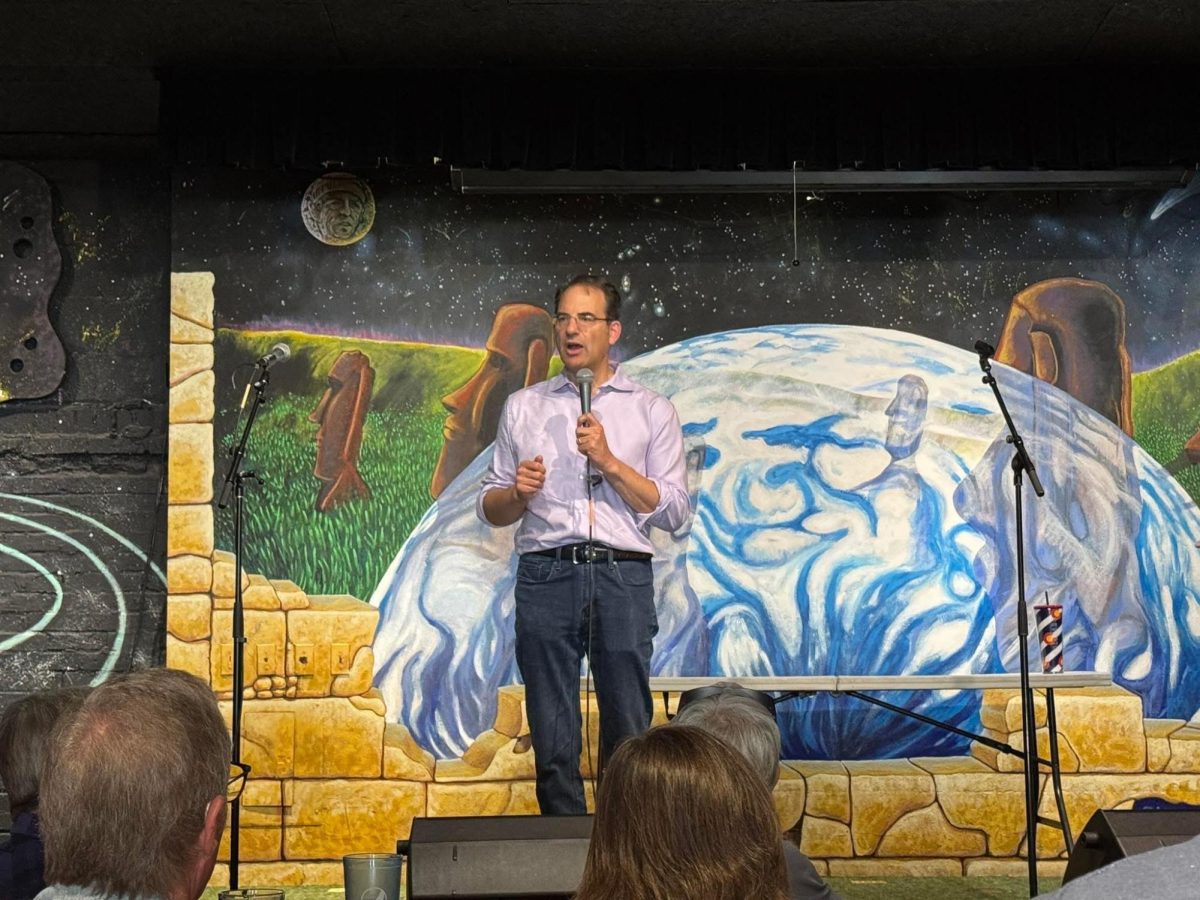After a 36-hour journey from the United States through Australia and New Zealand, a team of researchers got off of an airplane and entered a vast landscape of mostly ice. It is hard to believe that it is summer, yet the temperature is wavering around freezing and there are 24 hours of daylight.

Diana Wall, director of the Colorado State University School of Global Environmental Sustainability, and her team comprised of two post-doctoral researchers and a graduate student, traveled to Antarctica for about a month from late December to late January. Their mission: soil.
The Research
Wall is part of The McMurdo Dry Valleys LTER project, which studies the aquatic and terrestrial ecosystems in a cold desert region of Antarctica. It is located on the southern tip of Ross Island, which is New Zealand claimed and run by the United States Antarctic Program.
“The reason I work in Antarctica with a lot of other people is because I work on soil biodiversity,” Wall said. “I’m interested in all the life in soils and what it does for humans.”
Wall said the soil in Antarctica has very few species, which is a reason for going to Antarctica for research.
“It’s like this new universe when you start looking at what lives in soil, and it’s pretty exciting,” Wall said. “The only things you see in the soils in Antarctica are the things you see under a microscope.”
Wall has been making trips down to the continent for more than 25 years, according to the team’s blog. She works with a team of experts across different fields, including geology and hydrology among others. There are 12 people total in her team from universities across the nation. Four, including her, are from CSU.
Ashley Shaw, a Ph.D student studying ecology and soil food webs, said that even though the soils in Antarctica are simple, there are still a lot of answered questions about them. One question is the location of the carbon source, which allows a species, even if in a limited number, to survive in the soil. Yet the simplicity of the structure of the soil makes it easier to study and draw conclusions.

“It’s important to be in Antarctica because these ecosystems are simple, and we can get to the very detailed parts of the food web that are hard to get with more complex systems that have more species,” Shaw said. “This one only has about five species of nematodes and a couple species of mites.”
A typical day for the group, Shaw said, begins by flying to the sampling field in the morning by helicopter. The group shows up ready in red parkas, big white boots and all of their cold weather gear. They then fly to the field site, which is about 40 miles from the station, to collect their samples. They come back to the station at night, where they can examine samples at the lab.
“We try to get as much done as possible at the station, because if we get all the data collected there, we can tell right away if something is wrong with our samples,” Shaw said. “If we do it right away, we get the best data possible — all the animals are alive and doing well. We do bring samples back, but it becomes a lot more difficult to deal with.”
The station at McMurdo is fully equipped for the team to conduct their research, but it also means a lot of work, according to Walter Andriuzzi, a post-doctoral researcher in soil biodiversity and ecosystem functioning, who went to study in Antarctica for the first time with the group’s recent trip.
“We worked like crazy. We worked from 8 a.m. until 8 or 9 p.m., Monday-Saturday. Sunday, we had the morning off, but after lunch we would start working again,” Andriuzzi said. “We try to analyze as much as we can down there.”
The scientific community at the station and being cut off from the rest of the world creates a unique place for scientific discussion, Shaw said. There are many more researchers at McMurdo than just those on Wall’s team.
“The cool thing about being in Antarctica and being at McMurdo (the scientific research station on the continent) is that everyone is there for science, so you’re surrounded by people who are really interested in what you’re doing, who want to help with what you’re doing,” Shaw said.
Experiencing Antarctica, a landscape of ice
Being in a climate like the one in Antarctica does, however, present some challenges, Wall said.
“The weather is the No. 1 thing we worry about,” Wall said. “If we can’t fly, we can’t do work.” The station is about 40 miles from the valleys where they do their research.

Leaving Antarctica is almost as difficult getting in. Shaw said the team has to make sure their gear and supplies is properly stored away in big, wooden crates, which will sit outside until they return next for the next season or for the equipment that should not freeze, be stored in a locker.
“At the beginning of the season, we show up to an empty lab,” Shaw said. “We have to get everything set up when we get there. Then at the end of the season, we may only have a couple of days to get everything packed up and do it well.”
Antarctica’s landscape and location make it difficult to get to. There are not many people that will ever experience Antarctica in their lifetimes. Simply the opportunity to conduct research in Antarctica is one of the greatest things about being there, Wall said.
“When you’ve flown out on a military aircraft, you land on skis on an ice runway and you get off the plane, after all this travel and all this planning, and you just cannot believe how much ice is it and how fortunate you are to be there and be able to see it,” Wall said. “I feel like I’m very, very privileged to be able to do research in Antarctica.”
Collegian International Reporter Megan Fischer can be reached at news@collegian.com or via Twitter @MegFischer04.





